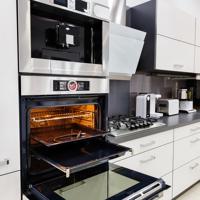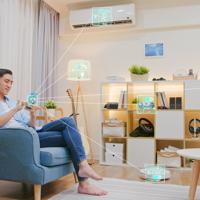In this smart technology era, motion sensors have become prevalent in various aspects of our daily lives, particularly within smart home security systems. These devices offer a subtle yet crucial layer of security by detecting movement and initiating a sequence of predetermined actions.
Let's delve a bit deeper to understand what motion sensors are, how they work, their types, and practical applications. We'll also look into a few examples to paint a clearer picture.
What Are Motion Sensors?
Motion sensors or detectors are devices that detect physical movement in a given area and convert that information into an electronic signal. They serve as the eyes of your smart security system, alerting you or triggering other smart devices when they detect movement.
How Do Motion Sensors Work?
The operation of a motion sensor depends on its type but fundamentally, they monitor changes within the environment to detect motion. When a sensor detects such changes, it signals the connected device or system.
Types of Motion Sensors
Understanding the different types of motion sensors can help you choose the right one for your needs:
Passive Infrared Sensors (PIR): These are the most common types of motion sensors. They detect body heat (infrared energy) and are often used in security systems due to their reliability and affordability.
Ultrasonic Sensors: These emit ultrasonic waves and measure the reflection of these waves off moving objects. They can be more sensitive but might also cause false alarms.
Microwave Sensors: Much like their ultrasonic counterparts, these sensors emit microwave pulses and measure their reflection. They cover larger areas but could be more expensive and susceptible to electrical interference.
Dual Technology Sensors: These combine two technologies, often infrared and microwave, to reduce false alarms. Both technologies must activate for the sensor to trigger.
Tomographic Sensors: These create a network of radio waves and detect any disturbance within that network. They're particularly useful in large spaces without requiring direct line-of-sight.
Applications of Motion Sensors
Motion sensors are integral in various scenarios, often used for:
- Home Security Systems: They can trigger alarms or notifications when unauthorized movement is detected.
- Lighting Control: Automatically turning on lights when someone enters a room, saving energy. Learn more about home automation
- Home Automation: Starting a series of actions, like adjusting the thermostat or opening blinds.
- Commercial Spaces: Ensuring safety and reducing energy usage, such as in offices and stores.
Practical Examples
Let's consider some examples that illustrate their use:
Smart Security Cameras: Motion sensors in these cameras start recording when movement is detected, capturing crucial security footage without needing to record continuously.
Outdoor Security Lights: Motion-activated lights serve as a deterrent for potential intruders, enhancing outdoor security.
Pet Monitoring Systems: Motion sensors can alert you when pets enter specific areas or leave designated zones.
Research and Considerations
When selecting motion sensors, consider their installation requirements, area of coverage, sensitivity, and integration with existing smart home systems.
It could be worthwhile to research product reviews and consult trusted sources like consumer reports for guidance. Look for companies with a solid reputation and support in their smart home products.
Humble Perspective
The landscape of motion sensors is vast, and as technology develops, more options and capabilities become accessible. While they offer enhanced convenience and security, spending time to understand your specific needs may lead to a more satisfying setup.
Although I've tried to provide a comprehensive overview in this article, my knowledge is just a piece of a much larger puzzle. Motion sensors play an impressive role in smart home systems, and simple steps in exploring them can lead to significant improvements in home security and convenience.
Feel free to dive deeper into resources from technology forums or consult with home automation experts to learn more about how motion sensors can precisely fit into your lifestyle.



